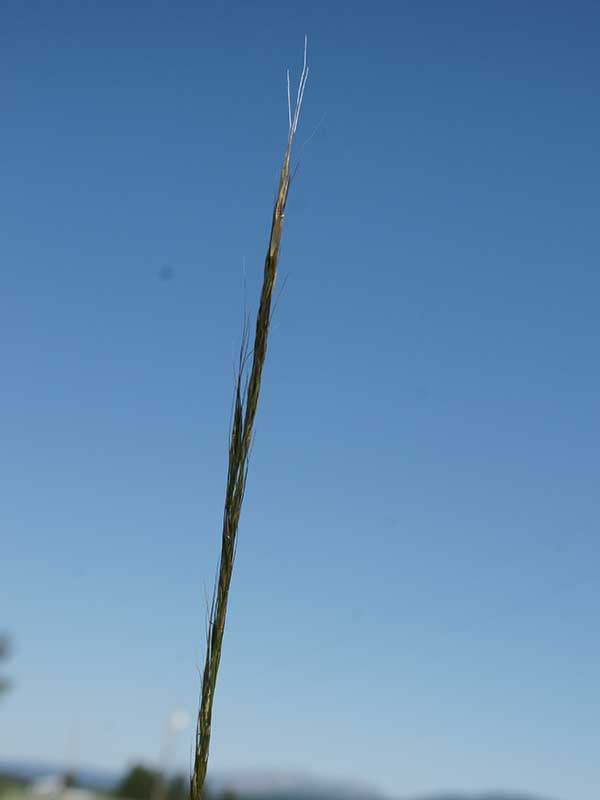Hesperostipa comata / needle and thread
- widely spaced bunchgrass
- glossy leaves, smooth stem
- narrow inflorescence with long awns (hairs)
- sharp, needle-like seed retaining the awn
- drought tolerant
Also known as: spear grass
Synonyms: Stipa comata
Note: grasses have a nomenclature all their own, much different from that of dicots. A good resource/slide show from the University of Idaho on grass structures is available here.
Needle and thread is a short-lived, perennial, cool season, bunchgrass up to 3 feet tall. The individual plants (bunches) are small, only about 3 inches across, and widely spaced. Though usually found in open grasslands, it also occurs in pine forests where these photos were taken.
Needle and thread greens up early in the spring and, if there is sufficient moisture, again in the fall. In between, it is both drought resistant and drought tolerant (i.e. it takes a lot to make it brown out and it still comes back). The culms are erect and smooth; the leaves are long (8-12 inches), glossy, and flat. Before flowering starts in the spring, the species provides good forage for livestock, elk and other grazers.
The inflorescence is a narrow, contracted (i.e. short or tightly packed) panicle that remains partially in the leaf sheaths. The mature spikelets have awns with long, spiraling hairs. These awns detach from the inflorescence with the seeds, the combination looking like a short needle and long thread.
Thereafter, each seed is like a sharp needle with an awn that twists several turns when the seed is released. Increased moisture causes it to untwist, and, upon drying, to twist again, thus drilling seed into the ground. One commercial seed site says, “It is fascinating to take the seed head from the plant, stick the needle into the ground and watch the thread drill in the seed (it is a hygroscopic drill).”
The seeds and awns are sharp enough to damage tongues, throats, eyes and ears (see also Hordeum jubatum / foxtail barley). The seeds are dormant when released and can persist in the soil for some years; the requirements to leave dormancy decrease with each year.
Needle and thread has both surface-spreading and deep, fibrous roots. Both types contribute to the high drought tolerance of the species.
Interesting bits – Needle and thread grass is the provincial grass of Saskatchewan. There and elsewhere (they say), kids like it because the seeds can be thrown at each other like spears with wavy handles, and they stick to clothing. I guess this is a cool way to pass the time before they can make snowballs.
| Family | |
|---|---|
| Inflorescence size | |
| Inflorescence type | |
| When? | |
| Where? | forest gaps and roadsides, grasslands, pine forests, xeric (dry) |


